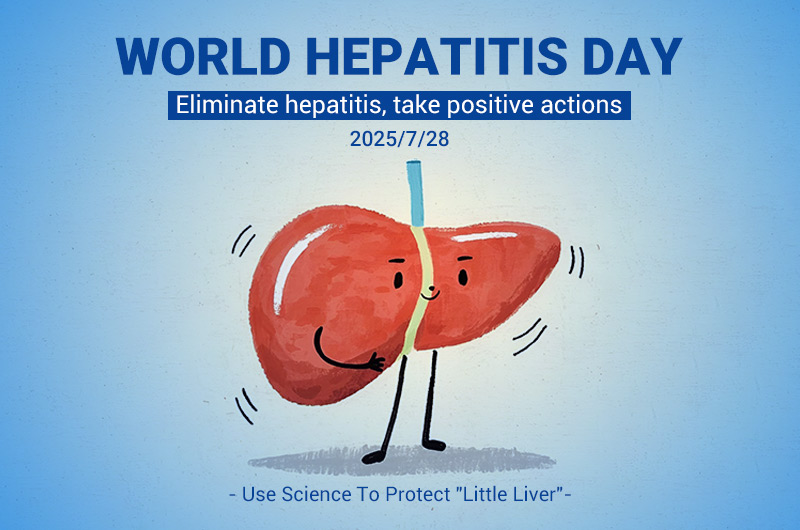Eliminate hepatitis, take positive actions - use science to protect "little liver"

Eliminate hepatitis, take positive actions - use science to protect "little liver"
July 28 is World Hepatitis Day. The liver, as the "chemical factory" of the human body, undertakes core functions such as metabolism, detoxification, and immunity, but viral hepatitis is like an invisible "silent killer", quietly threatening the health of hundreds of millions of people around the world. Faced with this severe challenge, how can we use science to build a line of defense?
Vaccine: The first shield to prevent hepatitis
Vaccination is the most economical and effective means to prevent viral hepatitis.
Blocking transmission: Building a defense line from details
The transmission routes of viral hepatitis are complex and require precise prevention and control:
Hepatitis A and hepatitis E: transmitted through contaminated water sources and food. Avoiding raw seafood, washing hands frequently, and not drinking raw water can effectively reduce the risk of infection.
Hepatitis B and hepatitis C: Blood, mother-to-child and sexual transmission are the main routes. Refusing drugs, not sharing razors and toothbrushes, and choosing regular medical institutions for blood transfusions and injections are the key to cutting off transmission. The technology for preventing mother-to-child transmission of hepatitis B is mature. Through combined neonatal immunization (hepatitis B vaccine + immunoglobulin), more than 90% of infants can be protected from infection.
Hepatitis C: There is no vaccine yet, but the risk of infection can be greatly reduced by standardizing medical operations and avoiding unsafe sexual behavior.
Early screening and early treatment: let the liver no longer be "silent"
The early symptoms of hepatitis are hidden and easy to be ignored. When symptoms such as fatigue, loss of appetite, and jaundice appear, they have often progressed to cirrhosis or liver cancer. Regular testing of liver function and viral load is the "golden key" for early detection and early treatment. Hepatitis B patients need to be reexamined every 6 months, and hepatitis C patients can achieve a cure rate of more than 95% through antiviral treatment.
Healthy life: reduce the burden on the liver
Non-viral hepatitis should not be ignored either. Alcoholic liver disease, fatty liver, etc. are closely related to bad living habits. Quitting alcohol, controlling weight, and avoiding drug abuse are "compulsory courses" to protect the liver. The World Health Organization recommends that men should not consume more than 20 grams of alcohol per day, and women should not consume more than 10 grams; a balanced diet and moderate exercise can reduce the risk of fatty liver.
Social co-governance: let care be everywhere
The elimination of hepatitis requires the participation of the whole society. Medical institutions should strengthen the construction of hepatitis diagnosis and treatment capabilities, communities need to popularize vaccination and screening services, and companies need to ensure the occupational health of employees (such as avoiding contact with blood-borne pathogens). Everyone is the first person responsible for their own health. Taking the initiative to get vaccinated, having regular physical examinations, and refusing to discriminate against hepatitis patients are the due meaning of a civilized society.
World Hepatitis Day is not only a reminder, but also a clarion call for action. Let us use science as a weapon and responsibility as a bond to jointly protect the "little liver" and let health and hope illuminate every family!
